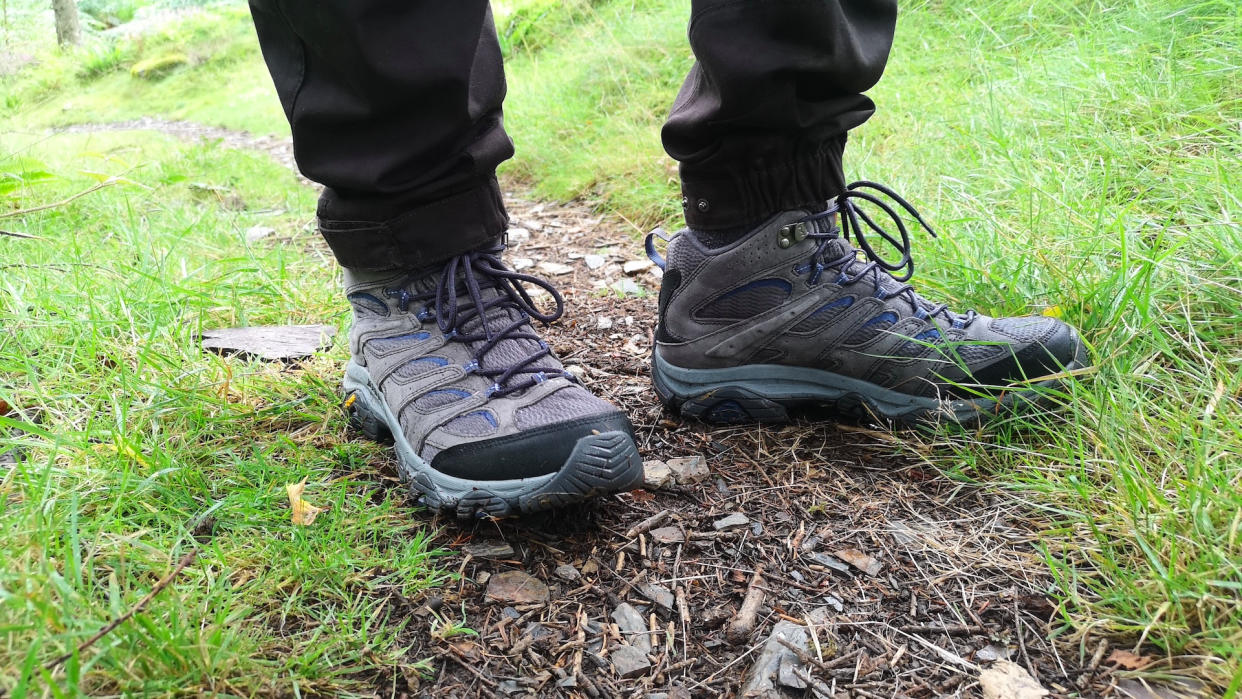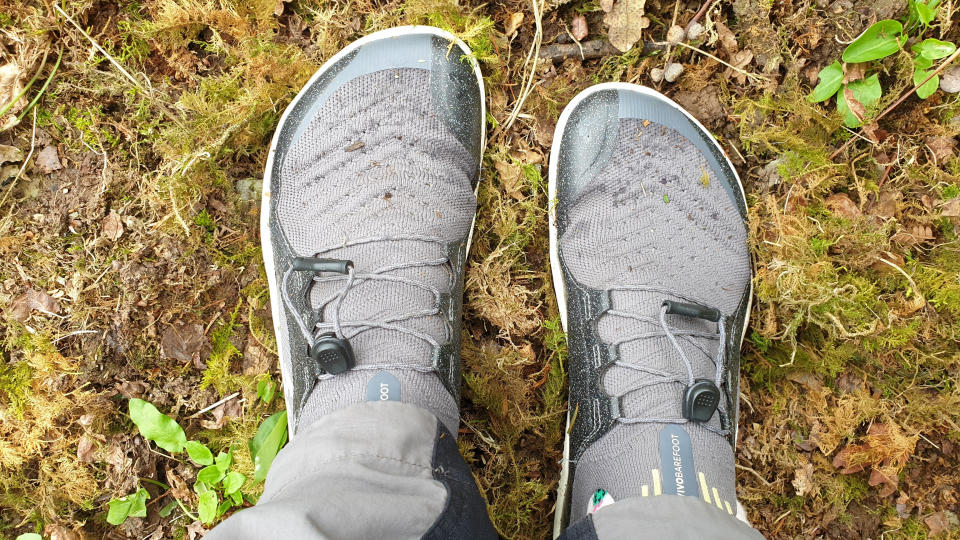I test hiking and running shoes every day – here’s why I think a wide toe box is one of the most important features to look for

To be honest, I never gave the toe box of my hiking boots or running shoes much thought until I started writing about the outdoors. In fact, I’m certain I’d never even heard the term “toe box.” I just tried on shoes in the store and if they felt good and I could afford to buy them, I wore them on the trail until holes appeared in them, then I repeated that process.
Testing hiking and running shoes for my job at Advnture is a different story, however. I frequently hit the trail in shoes and boots I’d never consider wearing otherwise in the name of journalism. Some are too stiff and technical for the way I like to move on the trails, others are far too Gorpcore in style, and quite a lot of shoes meant for muddy trails are inexplicably white.
But over the past few years and countless footwear tests, the one feature that really stands out to me as a make-or-break factor when it comes to hiking boots and trail running shoes is the width of the toe box.

What is a toe box on shoes?
If it’s not obvious by the name, the toe box is the term given to the part of any shoe that surrounds your toes. It’s not a separately constructed component, it’s just the area where your toes will go when the shoe is on. However, it’s not always designed with actual toes in mind.
Now, the end of your shoe can’t be a square, otherwise you’d trip over with every step. It’s best if it’s a little rounded, but thanks to fashion trends, many shoe companies have taken this too far.
If you go and grab a selection of your running, fashion and work shoes right now and line them up on the floor, they’ll probably be all sorts of shapes and sizes, but you’ll most likely notice that they all taper towards the end. Then if you look at your foot, you’ll almost certainly notice that the distance between your big toe and your pinkie toe is wider than your heel. So why aren’t your shoes designed to accommodate that?
As Rebecca Shawcross explains in the book Shoes: An Illustrated History, shoes with a long, pointed tip have been considered a sign of wealth and status since at least medieval times. Even if most of our shoes have gotten far more practical and technical since those days, it seems we’re still programmed to think that a tapered toe box is more appealing, even when it doesn’t leave room for our toes.

Benefits of a wide toe box
After testing dozens of pairs of running and hiking shoes, I started to suspect that a narrow toe box was an issue for me. I never wore shoes with narrow toe boxes for long enough to develop any serious foot problems, but I hated the feeling of my toes being bunched together, something that gets even worse when you add thick hiking socks to the mix. My suspicions were confirmed when I wore barefoot shoes every day for 6 weeks and discovered how good it really felt when my toes had enough space.
Studies show that the shape of your foot box can significantly affect the amount of pressure placed on your toes. A narrow toe box can contribute to foot deformities, according to a 2022 study published in the Journal of Foot and Ankle Research and increase your risk of developing bunions and corns, experiencing foot and calf pain, and disrupt your natural gait, according to one chiropractor.
Whether you’re walking or running, your toes need room to splay. If you walk around barefoot, you’ll see that natural spaces appear between the toes of your back foot each time you step off it. Choosing a shoe with a wide toe box means your toes have all the room they need to spread normally when you’re walking. This allows for a natural gait, which promotes better stability and balance.
Now you might be wondering if you can offset a narrow toe box by just wearing a larger (and therefore longer) shoe. You should already be going up a half size in running shoes and a full size in hiking boots to give your feet room to swell, and while this will buy your toes a bit of room at the end, it’s probably not enough to make up for a narrow toe box. That’s because the difference between two shoe sizes – say, a size 7 versus an 8 – is actually only about a third of an inch, or less than a centimeter.
If you go several sizes up to overcome this issue, you’ll just increase the chances of your shoes rubbing and causing blisters, tripping and falling on the trail, or further disrupting your natural gait. Similarly, while any wide-fitting shoe will automatically come with a wider toe box, if you don’t actually have wide feet it may not be suitable for you as your foot could slide around inside the shoe. For a more standard-width foot, you’re actually better off looking for a regular-width shoe designed with a roomier toe box.

What running and hiking shoes have a wide toe box?
I feel like it’s important to mention that you may not be aware that your toes are feeling crowded until you try a shoe with a roomier toe box. Because most shoes are designed to squash our toes, a lot of us have just adapted to the feeling and put up with it, or wonder why we get bunions. Everyone is different, but I think it’s worth trying a pair of shoes or boots with a wider toe box to feel the difference.
As I mentioned, I only fully appreciated the joys of a wide toe box when I tried the Vivobarefoot Magna Lite SG hiking boots and in general, a wide toe box is a universal feature of barefoot shoes, which aim to limit your foot’s mobility as little as possible. Barefoot shoes are a good place to start, but they also have minimal protection and zero drop, which might not be desirable or realistic for you.
In running shoes, I’ve had a lot of luck with Merrell for roomier toe boxes, especially the Long Sky 2 Matryx for hitting the trail and the Merrell Morphlite if you like to mix it up between pavement and trail. The Topo MTN Racer 2 is also well-celebrated for how much room it leaves for trail runners’ toes and I personally love the Nike Wildhorse 8 for longer trail runs.
For hiking, I remain surprised at how many hiking boots have narrow toe boxes, but the Merrell Moab line such as the Merrell Moab 3 Mid GTX hiking boots are well-known for wide toe boxes. The Berghaus Expeditor Ridge 2.0 and Hagl?fs Skuta Mid Proof Eco are also worth a try.
For the summer months and warmer climates, it’s also worth considering the Keen Newport H2 hiking sandals, which leave plenty of room for toes and let your feet breathe better than any shoe.